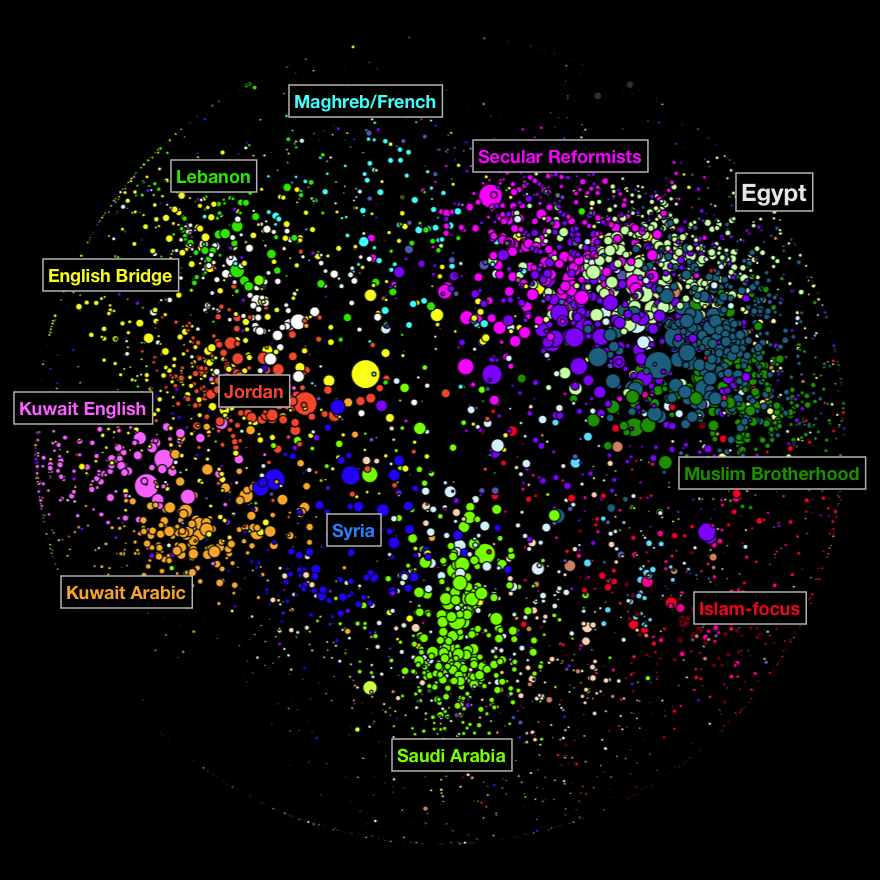Exploring Russian Cyberspace: New Internet and Democracy Publication (and more to come!)
March 2nd, 2012 — Bruce EtlingAs you’ve likely discovered from personal experience, timing is everything. And so the Internet & Democracy team is especially pleased to announce that just in time for this Sunday’s Russian presidential election, Karina Alexanyan, Vladimir Barash, Robert Faris, Urs Gasser, John Kelly, John Palfrey, Hal Roberts, and I are releasing a new paper that assesses the relationship between the Russian Internet and Russian political and social life: “Exploring Russian Cyberspace: Digitally-Mediated Collective Action and the Networked Public Sphere.” This work was made possible thanks to the generous support of the John D. & Catherine T. MacArthur Foundation.
In English and in Russian (thanks to the translation expertise of Gregory Asmolov), here is the full abstract for the paper:
**
This paper summarizes the major findings of a three-year research project to investigate the Internet’s impact on Russian politics, media and society. We employed multiple methods to study online activity: the mapping and study of the structure, communities and content of the blogosphere; an analogous mapping and study of Twitter; content analysis of different media sources using automated and human-based evaluation approaches; and a survey of bloggers; augmented by infra- structure mapping, interviews and background research. We find the emergence of a vibrant and diverse networked public sphere that constitutes an independent alternative to the more tightly controlled offline media and political space, as well as the growing use of digital platforms in social mobilization and civic action. Despite various indirect efforts to shape cyberspace into an environment that is friendlier towards the government, we find that the Russian Internet remains generally open and free, although the current degree of Internet freedom is in no way a prediction of the future of this contested space.
****
*Аннотация*
В данной статье представлены основные результаты трехлетнего проекта, целью которого было изучить влияние Интернета на российскую политику, средства массовой информации и общество. Для исследования общения и деятельности пользователей интернета мы использовали различные методы: отображение и исследование структуры, сообществ и содержания блогосферы и контента в Твиттере; опрос блогеров, контент-анализ различных средств массовой информации: как с помощью автоматизированных методов, так и с помощью экспертов.
Мы открыли существование живого и чрезвычайно разнообразного публичного пространства, которое представляет собой альтернативу более контролируемым официальным средствам массовой информации. Мы считаем возможным говорить об электронных платформах, на основе которых происходит социальная мобилизация гражданских действий. Несмотря на различные попытки превратить кибер-пространство в пространство, поддерживающее правительство, наше исследование показывает, что Российский Интернет все еще остается свободным и открытым. Тем не менее, несмотря на существующую свободу Рунета, очень сложно делать какие-то предсказания относительно его будущего.
**
Please note that we are working to provide a full translation in the future.
In the meantime, we welcome your comments at the Internet & Democracy Blog.
If we’ve whetted your appetite for more research on all things related to the role of the Internet in Russian society, we welcome you to take a fresh look at our October 2010 Russian blog paper, Public Discourse in the Russian Blogosphere: Mapping RuNet Politics and Mobilization.
Also, please keep an eye on our paper series page for future publications over the coming months, and check out the same site for a short description of each paper we’re planning to release.
Enjoy!






 Click Here
Click Here